Can Digital Twins and Tree Mapping Help Cities Adapt to Climate Change?


A city-scale digital twin of Perry, Iowa, created by the engineering firm Foth using Bentley Systems' software to process 375,788 images and 4.1 terabytes of information. (Image courtesy of Foth.)
Artificial intelligence (AI) could go a long way toward supporting trees and vegetation in cities. Trees have long been associated with sustainability and mitigating climate change. But as the climate has shifted into crisis mode, trees are integral to adaptation.
Their shade reduces ambient air and surface temperatures, diminishing the intensity of urban heat islands. Their leaves give off moisture that cools the air as it evaporates. And their canopies reduce the rate at which stormwater reaches the ground, while their roots encourage better absorption than soil alone, lessening the chance and intensity of floods. AI can strengthen trees’ ability to aid in climate adaptation and support sustainability in the process.
Companies are already using AI in natural spaces. The tech company IBM uses it to aid Kenya’s reforestation efforts, thanks to data from NASA satellites. Likewise, the infrastructure engineering software company Bentley Systems offers a program that creates AI-powered digital twins of cities for municipal planning and infrastructure management, including green infrastructure like trees.
Digital twins are accurate, virtual representations of real-world things that use real-time data to simulate the outcomes of potential scenarios. Pairing them with AI allows them to learn from the data they receive to offer better insights and predictions.
“We see more and more focus moving from a sustainability angle — or I would say, from a net zero angle — to a resilience angle,” Rodrigo Fernandes, the director of empowering sustainable development goals at Bentley Systems, told TriplePundit. “We see more customers and more users focused on ensuring that the infrastructure we have is ready … to adapt and to be resilient to the challenges that we will have in the future and the present because of climate change.”
Climate change puts more pressure on all types of infrastructure, from bridges to roads to greenery, he said. Digital twins aid in monitoring and inspecting each of these to support maintenance and planning. Municipalities can use them to create a digital map of the trees and vegetation in an area, a tech-enabled version of a process known as tree mapping.
The Singapore Land Authority uses the company’s digital twin software to do just that, mapping out its entire infrastructure, including the exact amount of trees and other greenery, Fernandes said. This can be done through satellite data or by putting sensors on cars, drones or, in Singapore’s case, aircraft.
“Our software [is used] to integrate, aggregate the data, and create the map,” he said. “They can easily quantify the amount of square meters or volume … [to] quantify their green infrastructure.”
These results are used to plan additional green infrastructure projects like increasing shade, improving air quality, mitigating flooding and more. Perry, Iowa also uses a digital twin to manage its man-made infrastructure and green spaces, including projects that restore natural spaces and reduce non-native species.
The software is also valuable for monitoring the health of existing trees. The AI can be trained to recognize tree health via the color of its leaves, Fernandes said. “In the case of Mendoza, Argentina, they had one million trees, so they applied it to the whole tree infrastructure,” he said. “Then they can use it to define actionable decisions like proactive maintenance.”
For tree mapping with digital twins to expand dramatically, a cultural shift is needed, Fernandes said. While city management might be aware of the need for a map in terms of sustainability and adaptation, they often have more pressing matters that need to be dealt with first. Nor is the availability of such technologies fully understood.
“They might think, ‘Okay we need to put more trees in a city eventually because we see the advantages of cooling, increasing quality of life, air pollution, and air quality improvement and all of that,” he said. But “they are simply not aware of digital technologies as an enabler.”
It remains to be seen whether municipalities will adopt such software as a part of sustainability and climate change mitigation on a large scale.
Clearloop Bases Renewable Energy Deployment on Environment and Health Impacts


(Image: Stefan Mitev/Pexels)
In the United States, electric power is produced in a variety of ways, from coal to hydropower to wind and solar, with each type largely differentiated by region. Because of these significant variations, the effects new renewable energy projects can have on carbon emissions and air pollution vary greatly depending on the location.
In a recent paper, experts from the carbon solutions firm Clearloop and the climate data nonprofit WattTime examine the disparities in the U.S. electric grid and the implications for carbon accounting, decarbonization strategies and environmental justice.
“Everyone is familiar with the idea that renewables reduce emissions, but they need to understand how,” said Henry Richardson, senior analyst at WattTime. “To put it simply, when you build a solar plant, it replaces a fossil fuel plant on the grid. If you build a solar plant in California, it might be replacing other solar or natural gas. In the Midwest, a new solar plant would probably replace coal … Exactly what renewables displace is key, and it is not equal everywhere. The effect of those megawatt hours is different, and you can get two to three times the benefit depending on where you build. How do emissions change when you make a change in the electrical grid? That is what we measure.”
Energy accounting practices and rules are typically developed at an international level. While most countries use a national electric grid, the U.S. does not, meaning that a solar plant has a different impact depending on where it is placed.
“The way we count emissions doesn’t reflect this,” said Winston Vaughan, head of climate policy at Clearloop. “That is a missed opportunity in how we approach decarbonization and a huge opportunity for renewables to drive even more impact for climate and health.”
“Market-based carbon accounting treats all megawatt hours the same, but that is not actually true,” Richardson added.
Renewable energy’s human health impacts
Clearloop uses three criteria to determine where it will deploy a new renewable energy project: solar radiance, the social vulnerability of the region, and the emissions impact a project could have in any area. The company measures social vulnerability by evaluating income levels, community investments over time, job creation rates and other factors.
“We take a different angle on renewable energy procurement by looking for places where it can drive the most good from both the climate and community impact perspectives,” Vaughan said.
Carbon emissions are often a reliable indicator for other types of pollution that occur when burning fossil fuels, such as mercury and particulate matter, Vaughan said. Those emissions have a significant impact on human health in the communities that host fossil fuel-based power plants.
“We already see huge health disparities from unequal exposure rates, but unless we are conscious in the way we deploy clean energy resources, there is a real risk of widening human health inequities,” he said.
How carbon markets can reduce barriers to renewable energy deployment
One of the barriers to deploying more renewable energy projects in underserved communities is a lack of financing. That is where the voluntary carbon market (VCM) can come into play.
“There is a reason why carbon financing dollars are flowing to certain places,” Vaughan said. “It is cheaper and easier to build renewable energy projects in some places than others, because of market obstacles.”
A fossil fuel plant requires continuous purchase of coal or natural gas. While a solar plant might be capital-intensive to build, the cost of generating electricity is almost zero because it comes from the sun.
“It’s difficult for solar plants to be profitable in places where it isn’t clear how much money they can make from selling electricity to the grid, like in Louisiana, Mississippi and Tennessee, where there is a monopoly on utilities,” Vaughan said. “Monopoly markets make it much more difficult to make up for the investments in a solar plant, but that’s where the VCM can come in. We have buyers who are paying upfront for building a new solar project on the grid, and they can get the full lifetime of environmental attributes, whether they’re renewable energy certificates or carbon credits.”
Carbon financing allows project developers to take a bet on riskier markets where there is more uncertainty about selling the electricity over a long period of time.
“There has been a lot of controversy about the role of the VCM, benefits, costs on local communities and Indigenous rights," Vaughan said But he believes there is a role for the VCM to play to help bring down market barriers that prevent the development of renewable energy in a more equitable way. “There is a failure to recognize inequities in the U.S. carbon market, and because we don't recognize those disparities, we haven't deployed resources in the VCM to address that. VCM is a powerful tool to overcome these market obstacles and drive investment where it can have the biggest impact.”
The path forward
Targeted deployment of renewable energy projects is key to smart, effective decarbonization.
“Building more solar in California is not as beneficial as it could be elsewhere,” Richardson said. “Same with wind energy in the Great Plains. Before we start a new project, we need to ask if we are displacing fossil fuels or if we are displacing other renewables.”
“We have to address climate change, and it is also an opportunity to not just reduce carbon emissions but build a more equitable world for the people who live here,” Vaughan added.
Vaughan also acknowledged that the projects are in the early stages, so the data about the economic development of targeted renewable energy deployment is not fully materialized.
“However, on a tangible basis, we can measure the tax dollars we are paying,” Vaughan said. “We buy the land we build on instead of leasing, we are there for the long haul and we have a stake in the community. That manifests in how we take care of the land, from planting native grasses to mowing with sheep flocks to partnering with local farmers. It really matters to local economic development offices and local communities.”
The Paris Olympics Prove Reusable Packaging Is Possible On a Massive Scale


Fans gather behind the Eiffel Tower for a women's beach volleyball match between Germany and France at Champ de Mars Arena in Paris on July 28. (Image: Alain Grosclaude via France Olympique/Flickr)
It seems the whole world is talking about the Paris 2024 Olympic and Paralympic Games, from athletes performing superhuman feats to Snoop Dogg's wealth of comic relief on the sidelines. More than 15 million people flocked to France's capital to feel part of the action, with over 3 million holding tickets for the games. Many of those spectators noticed something new when they stopped by a snack stand for their favorite beverage, as the Paris Olympics are the first to serve drinks in reusable packaging, in partnership with the France-based company Re-uz.
The Paris Olympics are the largest sports event ever to replace single-use beverage cups with refillable alternatives, and advocates hope it will send a clear message to event organizers and beverage brands that reuse is possible on a large scale.
"The objective of doing the Olympics was to show the world and to show everyone that it's doable — if there is a will, if you plan and if it's organized," said Octave Pirmez, sales director for Re-uz, which provides reuse and refill services across six European countries and parts of Canada.
That's good news for the planet, considering the equivalent of more than 280 billion beverage bottles are washed into the world's oceans every year. If nothing changes, the production of plastic — much of it single-use — will account for an estimated 20 percent of the world's oil consumption and up to 15 percent of the global carbon emissions that drive climate change by 2050. The dangers climate change pose to our way of life — and the sports we love — were on full display in Paris as temperatures soared above 95 degrees Fahrenheit in a national weather emergency that scientists say would have been “virtually impossible” if not for rising emissions.

Reuse at the Paris Olympics raises awareness of the possibilities beyond disposable
Founded in 2006, Re-uz powers reuse setups at major events like the Wimbledon tennis championships and music festivals across Europe, along with a Starbucks reusable cup pilot in France and the Billie Cup returnable cup program at more than 200 eateries across Belgium, among other efforts.
The company's system is fairly simple: It offers a selection of reusable cups and food-ware to customers, and it provides services to pick up, wash and return the packaging for reuse. All of the company’s reusable packaging is designed to maximize recyclability at end of life and is made in France to reduce environmental impact, according to Re-uz. A network of washing centers across Europe minimizes excessive shipping, with Re-uz teams operating at more than 32 sites within France alone for distribution, logistics, washing and delivery of reusable packaging.
Re-uz will utilize this existing infrastructure to support reuse at the Olympics. Cups from the Paris games will be sent to the company's Paris washing center staffed entirely by people with disabilities, while empties from football and sailing events in southern France will head to another washing center in Marseille, Pirmez said.
Even before partnering with the Paris Olympics, the company washed more than 80 million cups over the past five years, helping to avoid an estimated 129 tons of single-use plastic, according to its parent company Impact Group.
With millions of drinks set to be poured at the Paris Olympics, the potential for avoiding waste — and raising awareness among spectators — is huge. "Most people, especially at the Olympics, have never experienced reusables, so it's a first time for them," Pirmez said.
Re-uz has already received inquiries from global attendees looking to set up similar wash and refill systems at events and venues in their home countries. "We had a lot of requests from South America, and we had some requests from the Middle East," Pirmez said. "Definitely it helps to sensitize people to reuse and that there is another solution — there is an alternative to single-use."
Still, the first reuse system at the Olympics didn't always meet gold-medal standards, with advocates including the ocean conservation nonprofit Oceana calling out examples like vendors pouring beverages from single-use plastic bottles into reusable cups. But Re-uz and other reuse advocates hope the effort will send ripple effects that go far beyond Paris, particularly when it comes to convincing major event organizers and beverage companies that reuse is viable at scale.
"Obviously it's not perfect, but it's also to show Coke and all the big beverage companies that it can be done — and that's a major positive step for reusables," Pirmez said.
Athletes and advocates push beverage giants to go further
The Olympic Games count some of the world's largest companies as longstanding partners, including the beverage giants Coca-Cola and PepsiCo. Though the beverage majors sell some drinks in refillable packaging, primarily in Europe and Latin America, reusables still make up less than 15 percent of their global drink sales.
Athletes and advocates are looking to speed the transition further. In an open letter penned last month, more than 100 sports organizations and athletes — including Olympians competing in Paris — called on Coca-Cola, PepsiCo and bottler Coca-Cola Europacific Partners to make reusable an option for all of their customers globally by 2030.
"In July, Oceana supported the action of over 100 sports organizations and elite athletes who sent a letter to leading event sponsors Coca-Cola and Pepsi, calling on them to make future sporting events run on reuse rather than single-use — they didn’t ask for both," Dana Miller, Oceana’s director of strategic initiatives, told TriplePundit in an email. "We want to see more reusable packaging at events in the future, and we want to see it done right.”
The athletes who signed say the move toward reuse is imperative to preserve the sports they love and ensure a cleaner environment for future generations. “I’ve competed in events around the world — and everywhere I sail, I find single-use plastics polluting our waters and shorelines,” Lara Dallman-Weiss, an Olympic sailor for Team USA and a signatory to the open letter, said in a statement. “One thing is clear, more needs to be done to stop the plastics crisis.”
Re-uz has already inked an contract with Coca-Cola to deploy reusables at more of their events in Europe, and it aims to leverage its presence at the Olympics to bring reusables to more major venues worldwide, Pirmez said.
"Our objective is to keep pushing for event organizers to switch from disposable to reusable, and I think the Olympics will show everyone that it's doable because if we did it with the Olympics, we can do it for smaller events," he said. "There are still a lot of possibilities, basically everywhere where there is a disposable, and when it makes sense, the objective for us is to keep pushing to convince them to switch."
Homepage image: nicolas michaud/Flickr
Carbon Capture Can Compliment the Circular Economy with E-fuels

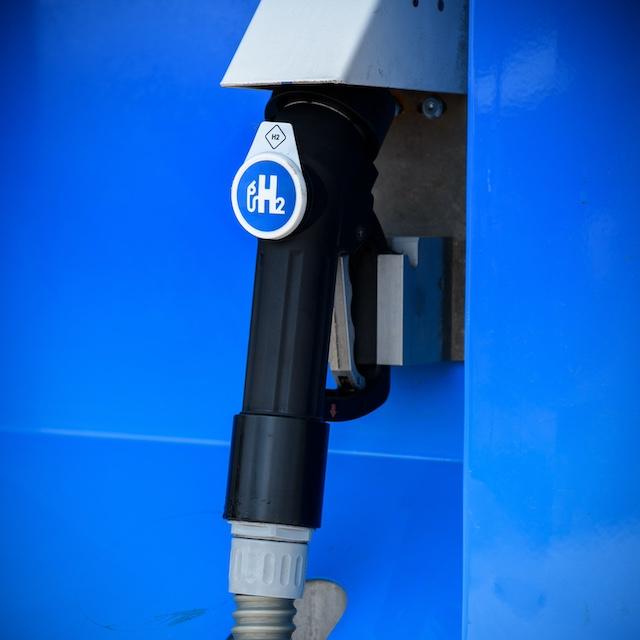
Captured carbon can be used to create synthetic e-fuels that replace fossil-fuels. (Image: Dirk Vorderstraße/Wikimedia Commons)
The carbon capture field has come under fire, with critics charging that it simply enables fossil energy stakeholders to continue extracting coal, oil and natural gas from underground. But not all carbon capture systems are alike. When airborne carbon dioxide is used to replace fossil-sourced fuels or chemicals with synthetic ones, carbon capture systems can contribute to the circular economy and help stimulate more renewable energy development, too.
Wind, solar and the renewables-to-liquids movement
The connection between renewable energy and synthetic fuels is already emerging in the field of e-fuels. Also called solar fuels or electrofuels, these new synthetic liquid fuels use electricity to run electrolysis systems, which separate water into hydrogen and oxygen. That is a significant sustainability improvement over the conventional hydrogen supply chain, which depends on extracting hydrogen from natural gas, or coal to a lesser extent.
With this green hydrogen in hand, carbon is another ingredient needed to make new liquid fuels and chemicals, and that can come from carbon capture systems.
Still, e-fuels do not fit the circular economy model if the electrolysis equipment runs on electricity from a coal or gas power plant. Low-cost wind or solar power makes all the difference.
Solving the renewables-to-grid puzzle
One of the key obstacles faced by wind and solar developers is a simple matter of transmission availability. Optimal locations for renewable energy development are abound in the U.S., but many are in remote locations. Building new transmission lines and connecting them to the nation’s grid can be a difficult, if not impossible, endeavor.
The e-fuels field can provide a solution by converting and transporting renewable energy in liquid form, rather than depending on a grid connection. Liquids, e-fuels and chemicals can be transported using existing infrastructure, including pipelines, roads, railways and shipping ports. E-fuels can also leverage existing tank farms and other facilities for storage. In contrast, storing electricity from wind or solar farms involves building new battery arrays and other energy storage systems.
To be clear, risks and hazards are always present when transporting or storing fuels and chemicals, sustainably sourced or not. But with the risks and hazards of climate change in full view, e-fuels present an opportunity to address a broader crisis from two sides: replacing extractive resources with more sustainable ones and capturing airborne carbon.
Who’s going to pay for all this?
Another key obstacle is cost. Though the cost of green hydrogen is dropping, the United States Department of Energy calculates that low-carbon fuels cost about $10.00 per gallon, far above the typical cost of fossil-sourced gasoline and other fuels.
To push costs down and help accelerate the renewables-to-fuels movement, the Department of Energy launched $41 million in funding for new reactor-based systems that process renewable energy, water and captured carbon into new fuels and chemicals.
“Renewable energy resources are often not co-located with the current U.S. power grid, and by enabling the transportation of sustainable fuels the selected projects can reduce interconnection barriers while helping cut emissions from hard to decarbonize industrial sectors,” according to the department’s Advanced Research Projects Agency-Energy office (ARPA-E), which is charged with administering the fund.
ARPA-E’s mission is to fund new, transformative energy systems that have not attracted sufficient support from private investors. This funding marks the first time it is supporting efforts to make liquid fuels.
A new decarbonization pathway
ARPA-E makes it clear that the new funding program is aiming for synthetic fuels that can be used as a drop-in replacement for conventional fuels. That will make a significant contribution to decarbonization over the coming years. Though electric vehicle sales are picking up, millions of gas- and diesel-fueled vehicles will remain road-worthy long into the future, and they will continue to use liquid fuels of one kind or another.
Sustainable aviation fuels are also a target of the program. The North Carolina startup Susteon previously received awards from the Department of Energy and the North Carolina Department of Commerce. Now, its receiving an additional almost $5 million from ARPA-E for five innovations in the production of sustainable aviation fuels, including an energy management system that optimizes the availability of wind or solar energy.
The new program is yet another indication that simply capturing airborne carbon and injecting it underground is an outdated approach that fails to proactively replace fossil energy with renewable resources. New systems and technologies are presenting a more sustainable, alternative pathway.
The Energy Storage Logjam is Breaking: Sodium-sulfur Batteries Can Help
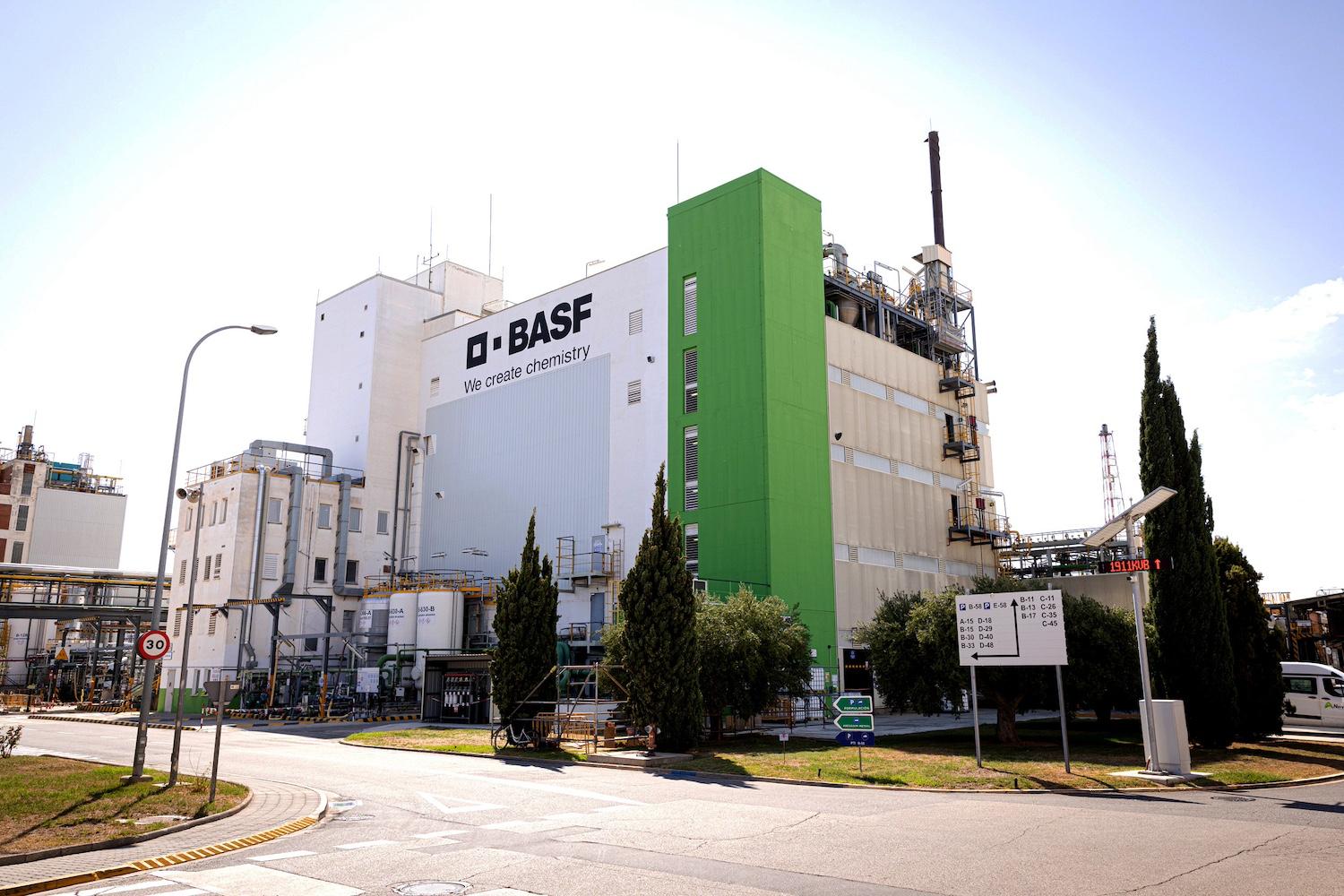
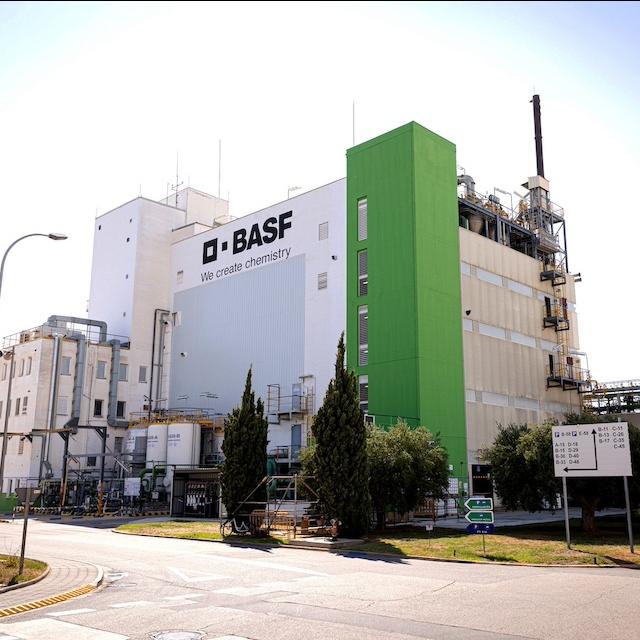
BASF is developing a longer-duration version of its sodium-sulfur battery, which offers duration, supply chain, and safety advantages over lithium-ion. (Image courtesy of BASF.)
Between Hurricane Beryl in Texas and a series of heat waves across the U.S., the impact of a warming climate has come into clear view this year. Equally clear is the need to remove some bottlenecks standing in the way of rapid decarbonization. That includes the availability of energy storage.
To decarbonize the grid, entirely new systems must be developed to hold more wind and solar energy for longer periods of time. In the meantime, facility managers can take advantage of a near-term solution in the form of sodium-sulfur batteries, a technology that offers advantages over the familiar lithium-ion formula.
Energy storage and the shift to peak winter demand
Lithium-ion batteries have dominated the energy storage market for many years. Electric vehicles, home energy storage systems and grid-scale battery arrays are some of the familiar use cases. In the stationary storage field, though, lithium-ion arrays are typically limited by a duration of four hours, or less.
The four-hour standard is no accident. It’s incentivized in some wholesale electricity markets in the United States to support a grid-balancing strategy that takes solar energy into consideration. More solar energy is available during the summer, and summertime peak demand periods tend to be relatively short in duration, making four-hour storage an economical choice.
Peak demand periods in winter require a different strategy. Winter demand peaks can last into the evening when solar power is not available. Traditionally, natural gas and heating oil fill the gap, but these resources are falling by the wayside as the building electrification movement gains momentum. The U.S. Department of Energy is among those advising that a shift in energy storage strategy is needed over the coming years to focus more attention on wintertime demand.
Parts of the Southeast and Texas already shifted to a winter demand pattern, according to a National Renewable Energy Laboratory report. The lab anticipates wholesale electricity markets will respond by incentivizing periods of energy storage duration beyond four hours.
Longer-duration energy storage gives grid managers more opportunities to smooth out the bumps in wind and solar availability. Taking advantage of low off-peak rates for longer periods is another benefit.
The sodium-sulfur solution
One energy storage solution already on the market is a proven sodium-sulfur formula, often called NAS based on the scientific abbreviations for the two chemicals. The chemical producer BASF is among the battery stakeholders with lengthy experience developing and marketing NAS batteries. The firm is introducing an updated, six-hour duration version of its NAS technology called NAS Model L24, in partnership with the Japanese manufacturer NGK Insulators.
In contrast to the volatile liquid electrolyte used as a part of the charging and discharging process in conventional lithium-ion batteries, NAS batteries use a stable, precisely designed ceramic material.
Although the word “ceramic” suggests a fragile object, industrial ceramics are different. A durable, high-performance ceramic material is commonly used in electrical applications, including the new generation of solid-state batteries emerging in the electric vehicle field.
Ceramics are also made from earth-abundant materials, an important factor to consider as manufacturers focus their attention on supply chain sustainability and security, said Caroline Brannock, BASF senior sales manager for battery technology.

Changing mindsets on energy storage
Despite the longer duration and supply chain advantages of NAS, the lithium-ion industry still has the advantage of familiarity. That can be a formidable obstacle to overcome.
“Everyone is so accustomed to lithium-ion technology, so it’s not necessarily about prices or technical specifications,” Brannock told TriplePundit.
Safety is one consideration that could make a difference. “We have a lot of safety concerns with lithium for mobility and stationary storage,” Brannock said, noting that lithium-ion installations typically require additional containment measures to reduce risks.“Two major concerns are thermal runaway and toxic gas release, particularly for urban areas. This is something NAS does better.”
The lithium-ion battery industry has incorporated new fire safety systems, according to a report from the Electric Power Research Institute. The report notes a sharp drop in the rate of battery energy storage system fires and other incidents described as “failures” in recent years. Still, knowledge gaps remain, and “a significant fraction of [battery energy storage systems] failure incidents had an unknown root cause,” according to the report
The long road to long-duration energy storage
BASF foresees commercial and industrial operations along with hospitals, schools, and other facilities that depend on a continuous supply of power in the event of an emergency among prospective customers for the new NAS battery. Islands and other remote communities would also benefit from access to energy storage technologies that last longer than the four-hour standard.
Beyond the needs of individual facilities and isolated communities, the U.S. Department of Energy is providing funds for innovators developing new energy storage systems with much longer durations capable of handling more wind and solar energy as the nation decarbonizes its power grid. The agency set a 10-hour minimum for new long-duration energy storage systems.
In the future, facility managers will have additional opportunities to weigh the costs and benefits of these new technologies. For the here and now, NAS offers a solution that can bridge the gap with duration, supply chain and safety advantages.
Amazon Reduces Packaging Waste with Artificial Intelligence
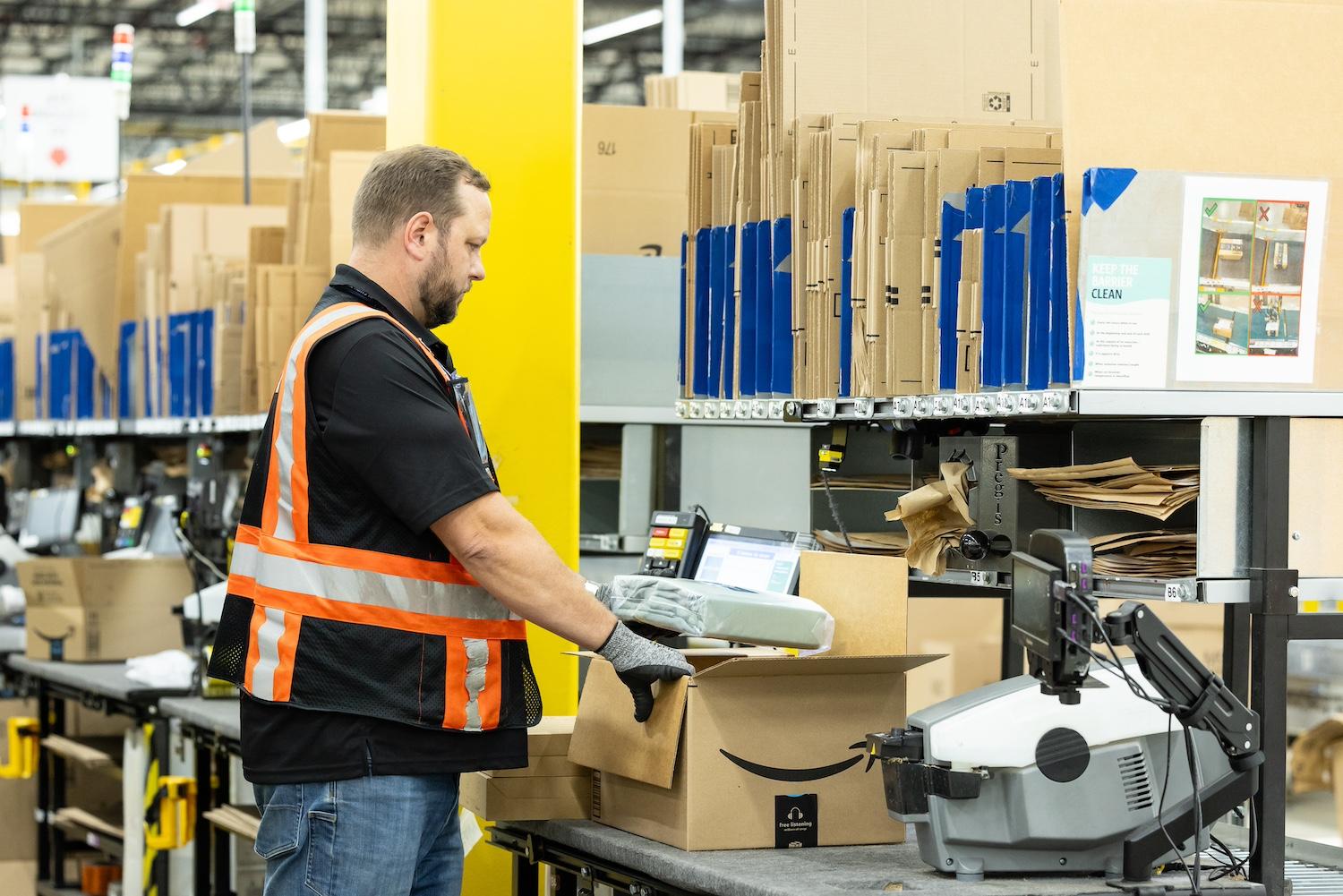
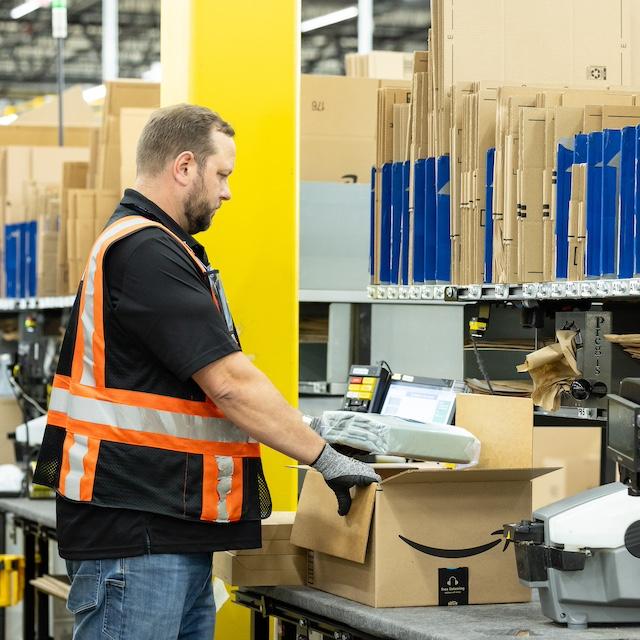
(Image courtesy of Amazon.)
In the quest to increase its sustainability standards, e-commerce giant Amazon has used artificial intelligence (AI) and machine learning to maximize its efficiencies for decades.
The company developed one such AI tool, the Package Decision Engine, to reduce packaging waste and optimize material use. It’s so far helped Amazon avoid over 2 million tons of unnecessary packaging and reduce packaging weight per shipment by 43 percent on average in the United States, Canada and the European Union. It's also helped Amazon avoid 80,000 metric tons of single-use plastic packaging globally since 2020.
Unfortunately, Amazon does not disclose how many tons of packaging material it uses each year. But in 2023, it delivered over 7 billion units by same-day or next-day delivery to Prime members. More than 4 billion of those deliveries took place in the U.S. — a 65 percent increase over 2022 — and more than 2 billion were in Europe.
For such huge volumes of products and an infinite number of order combinations, identifying the optimal packaging solution to keep each order safe during transit while minimizing the amount of packaging represents a significant challenge. The Package Decision Engine’s AI model is built to select the most appropriate packaging based on the product’s size, fragility and material type.
“The Package Decision Engine uses a combination of deep machine learning, natural language processing and computer vision, and is continuously learning about Amazon’s ever-evolving packaging options,” Kayla Fenton, senior manager of sustainable packaging at Amazon, told TriplePundit in an email. “It can predict when a more durable product like a blanket doesn’t need protective packaging, or when a fragile item like a set of dinner plates might need a sturdier box.”
The AI tool learned that certain keywords associated with the product are important when making packaging decisions. “For example, a padded mailer with limited cushioning might not adequately protect an item with the words 'grocery,' 'screen,' or 'stoneware' in the description,” Fenton said. “So the model would recommend a sturdier option, such as a box. The model has also learned that keywords like 'multipack,' 'bag,' 'shrink,' and 'pack' are also associated with lower damage rates in the mail, and so indicates that the product might already have protective packaging and not need additional protection.”
The Package Decision Engine was conceptualized in 2015 as part of Amazon's broader sustainability goals, which include reaching net zero carbon emissions by 2040. Now, it's expanding to other markets including India, Australia and Japan. But “the tool will need to learn new languages and incorporate products specific to the new markets in order to continue rolling it out internationally,” Fenton said.
One of the ways it learns is by collecting information in near real-time from customer feedback reported through Amazon’s Online Returns Center, product reviews and other customer feedback channels.
“After compiling customer feedback with visual information and other text-based data about the item, the model produces a score that predicts the best packaging type to use,” Fenton said. “The packaging selection is remembered by the model and used to understand future packaging needs.”
This feedback loop ensures that the packaging meets sustainability standards and customer expectations regarding product protection and waste reduction.
The company’s commitment to reducing packaging waste extends beyond its internal operations. Another AI initiative in the works that revolves around reducing waste is its pilot with Glacier, a recycling tech company based in San Francisco.
“Glacier uses AI-powered robots to automate the sorting of recyclables and collect real-time data on recycling streams for companies, which can help reduce landfill waste and increase the use of recycled materials in packaging,” Fenton said. “Amazon is currently testing Glacier’s technology to sort and recycle new types of packaging that is not yet recycled at scale today, including bio-based and biodegradable plastics.”
Women Run Less Than 25% of Nonprofits: How Organizations Can Change That


(Image: Benjamin Child/Unsplash)
A staggering 75 percent of workers in the nonprofit sector are women, according to the most recent data available from the American Association of University Women. The high percentage of women working in nonprofits should translate to higher numbers of female-led organizations in the sector. But only 42 percent of nonprofit boards are led by women, while only 22 percent of nonprofits are run by a woman executive director or CEO. The percentage of female-led nonprofit boards drops to 33 percent when it comes to organizations with incomes of $25 million or more, according to Nonprofit Quarterly.
The irony is that nonprofits work to make the world more equitable, but even within the sector, hiring practices skew towards male leadership despite a wealth of women workers in the field. This also seems to have a knock-on effect on the gender pay gap. On average, women earn around 25 percent less than men in the nonprofit sector, according to research by the National Council of Nonprofits. So why is progress slow?
With over 20 years of experience in nonprofit executive searches and transitions, Sara Garlick Lundberg said it all comes down to not working hard enough to get rid of implicit bias, which nonprofits should be aware of and work on internally. Sexist and misogynistic biases should be purged from any hiring process within organizations seeking to increase female leadership in their ranks.
“People use the term ‘executive presence’ a lot which is a term that really gets under my skin,” said Lundberg, the managing partner of nonprofit search practice for North America at DHR Global, pointing out the kinds of biases that should be re-examined. “It makes me cringe because these are qualities and characteristics that are more traditionally identified as male qualities. There’s that confidence that our society identifies as inherently male when you’re looking at leadership positions — that is, very often, people are looking for someone who will be compelling, someone who can speak convincingly to their staff.”
Another issue is that leadership roles are usually given to people in their mid-to-late 30s, so decision-makers preemptively question whether women eligible for these positions will be having children and starting a family at this age, Lundberg said. Boards of directors should recognize these biases during the interview process, check if their assumptions of candidates are about their gender, and recalibrate accordingly.
“If the candidate is around this age, her commitments outside of the office are absolutely being questioned. If not explicitly, they are very often being questioned implicitly,” Lundberg said. “This doesn’t happen all the time, but it does happen very often. People assume that mothers can't bear the burden of a busy executive position, but that same question or assumption is almost never made of male candidates.”
For women of color, the reality is even worse. Research shows they are particularly burdened in the sector, rarely being offered positions of leadership and taking on the majority of the work. Ultimately, implicit bias results in a lack of will to put women of color in these positions. It can paint a woman of color as unqualified for the job, especially when it comes to demonstrating professionalism that is usually associated with whiteness. Non-white hair styles, different cultural backgrounds, and socioeconomic differences can come across as unprofessional for people who haven’t challenged these biases within their own perceptions.
Things will change, but they simply are not progressing quickly enough, Lundberg said.
“There are some extra hurdles that come with being women,” Lundberg explains. “For example, you go off to a conference and all the guys are playing golf, which socioeconomically or racially is not something you are familiar with. I didn’t grow up in a family with the financial means to play golf, for example. So there are day-to-day barriers to inclusion and day-to-day barriers in the interview process.”
These “hidden” barriers present real obstacles for women to network and informally gauge opportunities for their own professional growth. Organizations should be investing in networking spaces that feel familiar to all kinds of people, rather than fancy retreats and conferences. It’s up to the organizations trying to improve on their gender bias to create spaces where female candidates feel comfortable being themselves to show off their skills.
Diverse hiring is only one step in increasing the number of women of color leaders in an organization. The culture within an organization has to be hospitable to the demands of people of all kinds. For allies who want to help women of color get there, Lundberg recommends being an active resource for them in navigating the organization.
“Within your organization, make sure people are doing okay,” Lundberg said. “You don't have to be a formal mentor to someone to check in with them and say, ‘Hey, how are things going? How are you feeling?’ Be a good listener. Reach out or respond when people need you.”
Organizations should look to promote existing diverse workers, too. Championing women of color is also about getting them ready for leadership positions, and actually offering them those positions, Lundberg said. Once women do become leaders, they often lack support from boards. So organizations need to have a solid onboarding process to make sure they can succeed.
“Is this organization saying, how are we going to support this person and make sure that they're successful? What does onboarding look like?” Lundberg said. “Onboarding is a really important process. A thoughtful onboarding for a leader in an organization should take over a year. The frequency of checkpoints and touch points can change over the course of the year, but onboarding should take a full year. Someone should always be checking in with you at six months, at nine months, and saying: ‘How's it going? What's working? What isn't working?’”
At the end of the day, boards of directors need to remember that diversity is a good thing, Lundberg said. A diverse candidate can change an organization for good. “Leaders and staff members should be saying, ‘Okay, this is awesome. We've got someone who's a little different in A and B ways. How can we learn from this person?’”
Companies Remain Committed to Net Zero, So How Can They Reach Their Goals?
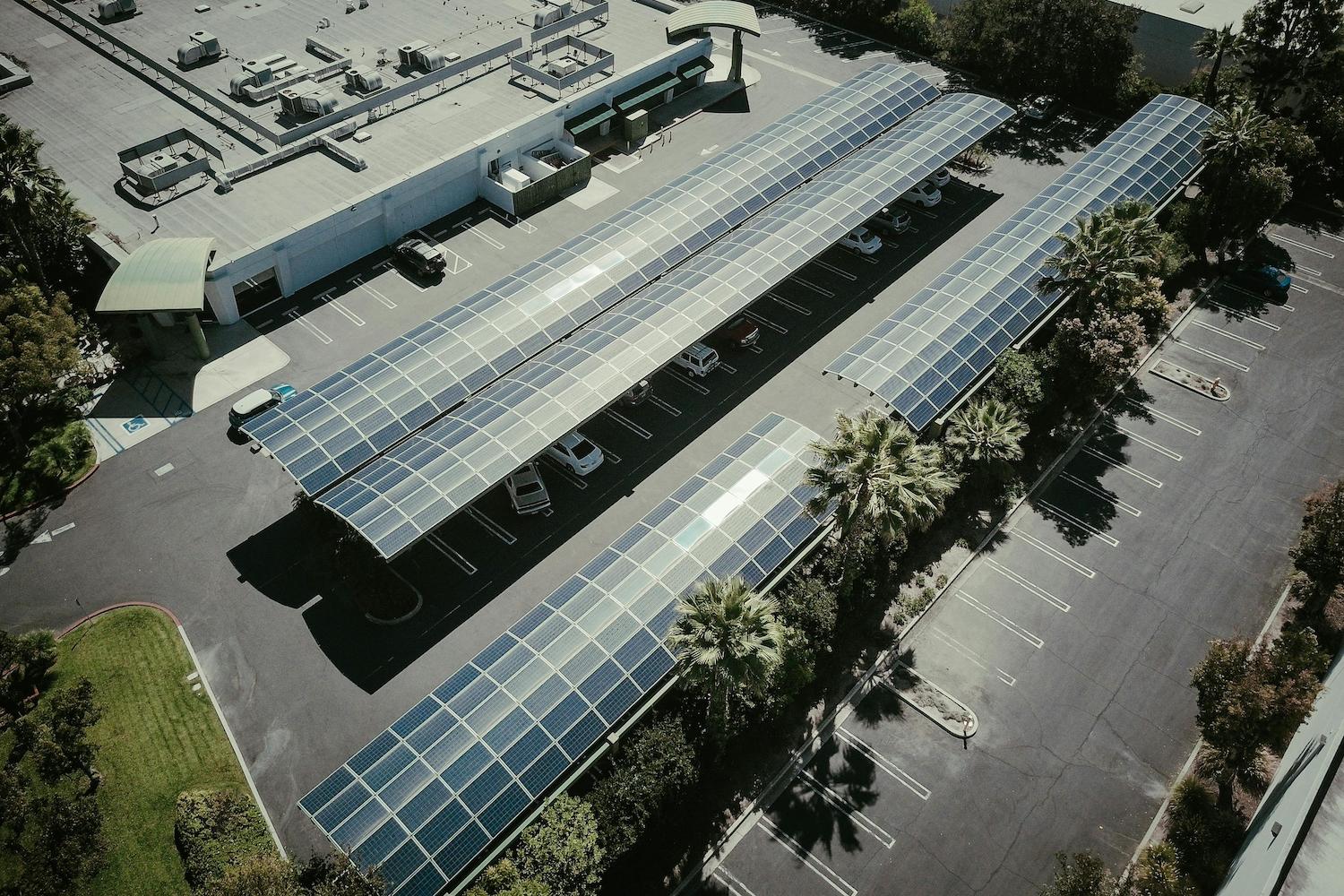
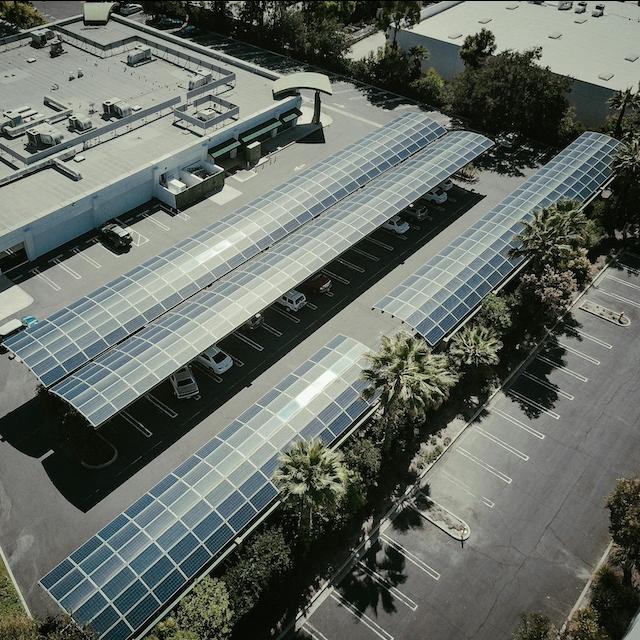
(Image: Kindel Media/Pexels)
An analysis of filings, reports, and climate data for more than 200 of the world’s largest public companies across 11 sectors, found that companies remain committed to their net zero carbon goals for 2030 and 2050.
Out of the companies surveyed by the accounting and auditing firm PricewaterhouseCoopers (PwC), 37 percent heightened their targets or expedited their timelines. Roughly 53 percent maintained their original goals, and five percent have not disclosed any net-zero plans.
While the PwC survey indicates that 90 percent of the major companies are either maintaining or accelerating their commitments, the progress toward those goals is mixed. Only 56 percent are on track to achieve their short-term Scope 1 and 2 emissions targets, which address direct emissions from a company’s operations and indirect emissions from its energy use. And just 22 percent are progressing toward their Scope 3 goals to target emissions outside of the company’s control, like from its supply chain and business travel.
“While we were encouraged by the aggressiveness of the targets, what was not so encouraging was the progress being made against those targets,” David Linich, PwC’s decarbonization and sustainable operations leader, told TriplePundit. “Ten out of the 11 sectors that we analyzed were off track to achieve net zero. The only one that was on track was the tech sector.”
Because the tech sector tends to be “more innovative early adopters by nature,” it wasn't surprising to see them moving aggressively to meet their net-zero goals, Linich said.
“In many cases, they’re tapping into some core capabilities that they have around data and engineering,” Linich said. “They’re using that to develop internal solutions that promote greater energy efficiency within their operations and their data centers or pursuing leading-edge things like 24/7 carbon-free energy.”
But the explosive growth in artificial intelligence is presenting new challenges for the tech sector.
“The energy demands from artificial intelligence are pretty enormous, and there’s going to need to be an even greater push by these companies in the tech sector to find ways of further innovating from an energy efficiency standpoint,” Linich said. “They’re also going to need to be more aggressive on the energy supply front in order to procure more renewable sources of energy to feed this increasing energy demand.”
Three main obstacles are preventing companies from making progress against their targets: doing the math to have a detailed plan, building a balanced portfolio of projects that provide short-term and long-term returns on investment, and executing plans effectively, Linich said. Still, each of these obstacles is surmountable.
To tackle them, companies must carefully calculate their approach to decarbonization for clarity and precision, Linich said. Without these specifics, they’re shooting in the dark and will likely miss their targets.
Many companies are overly focused on the simplest projects that produce the highest return on investment, he said.
“They’re essentially kicking the can down the road and making it harder for the next set of leaders to ultimately achieve that target,” Linich said. “Many of the actions that remove the most carbon may have a longer payback period attached to them.”
The complexity of decarbonization efforts is often underestimated, he said. It involves numerous cross-functional projects, third-party engagements and regulatory approvals.
“When you’re talking about this level of complexity, it requires a level of coordination that’s often lacking,” Linich said.
Of these obstacles, getting the calculations on target is the most important, Linich said. That means creating a detailed plan that forecasts future emissions trends because, as a business expands, emissions can increase without intervention. It’s critical to outline specific actions, how much carbon they will mitigate, their cost, who will implement them, and potential tax credits or incentives for funding support.
“You’ve got to have that detailed plan in place, and that can also help with addressing those two other obstacles in terms of balancing the short-term and long-term return on investment projects because you’ll have good visibility into what actions to take,” Linich told 3p. “Regardless of how long it takes to get a payback, you’re now clear-eyed in knowing what you should do and when [you should do it] in order to achieve your target.”
It's encouraging that more than a third of the companies surveyed are more ambitious in their new net zero goals, he said.
“CEOs are seeing their peers make aggressive commitments, and it’s motivating them to step up their commitments as well,” Linich said. “In other cases, companies achieve their targets ahead of schedule, or maybe they set a low bar to begin with, and that’s prompted new and more aggressive goals for some of the companies we studied.”
In light of evolving political and social climates, the level of resilience to these commitments was surprising to see, he said.
“We’re seeing that customers and employees are demanding action, investors are favoring it, regulations are requiring it,” Linich said. “We’re also seeing that this is very personal for many people. Their children and grandchildren are crying out for more to be done.”
Cocoa Prices Are Booming: What's Next?


As cocoa farmers in West Africa face more extreme weather, decades of underpayment leave them less able to adapt. (Image courtesy of Fairtrade International)
This story is part of From the Frontline, a guest-contributed column where we hear directly from climate justice advocates and those who are impacted by climate change. If you're interested in contributing your perspective to this column, please get in touch with us here.
Historically high prices for cocoa, the main ingredient in chocolate, have been making global headlines since chocolate Easter bunnies hit shelves earlier this spring. News coverage highlighted some of the key drivers of this rapid price spike, particularly a significant reduction in cocoa supply driven by a changing climate. Most estimates predict prices will continue to be more than double the average of the preceding decade because key producing countries, Ghana and Cote D’Ivoire, anticipate more supply deficits.
But here’s what the headlines are often missing: Today’s crisis stems from the longstanding exploitation of farmers, which stripped resilience out of these supply chains many years ago. This isn’t isolated to cocoa. The same commodity price trends are taking hold in coffee, with extreme droughts in Southeast Asia impacting the supply of Robusta coffee. Bananas, another American grocery staple, are likely next.
Cocoa, coffee and banana farmers are struggling to adapt to climate change, crop disease, aging trees, and persistent price volatility because of chronic, decades-long underpayment for their goods and labor — something which my organization, Fairtrade International, has warned about for years. Our 2023 report revealed how susceptible these supply chains are to threats caused by climate change and other environmental issues like deforestation and biodiversity loss.
Coffee growing regions around the world are at risk. Higher temperatures and altered rainfall patterns are making coffee harder to grow, increasing pests and diseases. Long-term, the number of regions best suited for growing coffee will be cut in half over the course of the next 25 years.
Frequent floods and storms in the tropical regions where bananas grow are making production unpredictable and unsustainable. In fact, four of the five countries America imports the majority of its bananas from – Guatemala, Ecuador, Honduras and Colombia – are rated “vulnerable” or “highly vulnerable” to the negative impacts of climate change, according to the University of Notre Dame Global Adaptation Initiative.
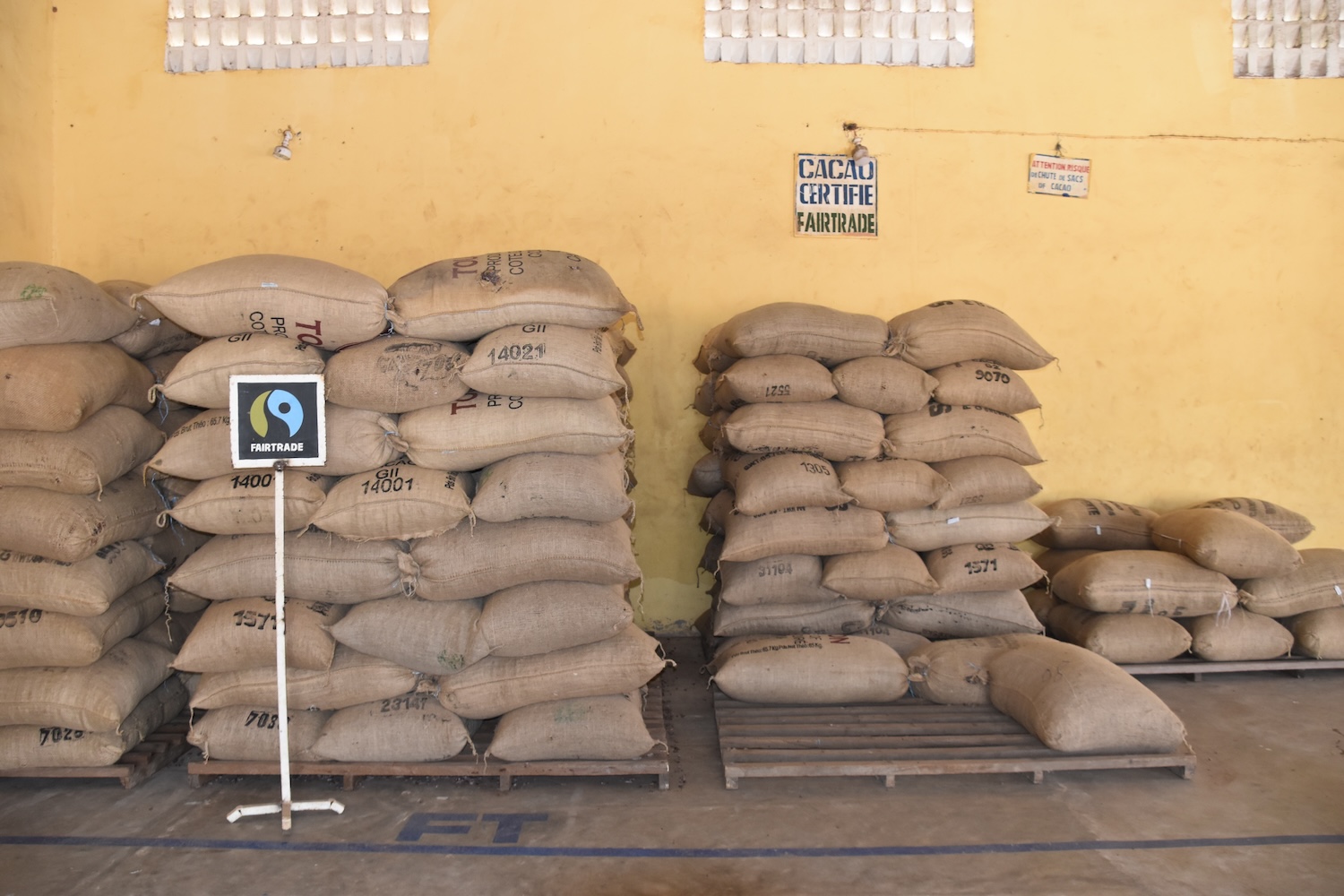
Large, wealthy companies throughout the supply chain have not done enough to compensate struggling farmers. Chocolate is a $130 billion industry, and while cocoa yields dwindle, the biggest companies involved are raking in record profits with increasing stock buybacks and dividends to boot. All this as they’ve passed on price increases to customers while shrinking sizes and cocoa content in their products. But even while big companies leverage these crises in the short term, they undermine their own futures as they allow farmers’ livelihoods to erode.
There is a simple solution that benefits the entire supply chain: Pay farmers more. While charitable giving and corporate philanthropy are helpful short-term buffers, lasting change comes from baking higher prices to farmers into the core business model. Payment must be enough to allow farmers, their families and their communities to not only live with dignity, but also to thrive and reinvest their profits in climate-resilient practices that prevent product shortages and protect longevity. This is better for farmers, and it carries long-term benefits for shoppers and companies.
For example, the majority of 10,000 smallholder coffee farmers who participated in Fairtrade’s Climate Academy in Machakos and Kericho, Kenya, had little to no prior knowledge of climate change. While these farmers contribute very little to global carbon emissions, they are the first to experience climate consequences. Irregular rainfall, periods of severe drought and rising temperatures lead to uncertain yields for small farms.
Climate Academy sessions spanning three years, including hands-on demonstrations, helped improve farmers’ awareness of climate change and helped farming cooperatives better prepare to identify agricultural problems, allocate financial resources, and implement mitigation measures efficiently. During hands-on demonstrations, participants learned how to adapt their farming methods for changing weather through practices like pruning, fertilizing, irrigation and shade. As a result, coffee farmers in Machakos have 20 percent more shade trees to protect their coffee from the sun, their cooperatives have invested in water tanks to store water for use during dry spells, and they have reported higher yields per coffee bush.
A world without chocolate, coffee or bananas could be reality if the wealthiest, most powerful players in the supply chain do not start paying farmers a fairer price. Investing in them now will help establish climate change resilience and create thriving communities while keeping shelf prices down for shoppers by preventing product shortages and protecting the longevity of the products we love. Paying farmers more is the first step in rebalancing inherently unequal global trading structures that put profits before people and the planet. The future of these products, and these farming communities, depends on it.
ESG: Illegal Collusion or Just Good Business Sense?
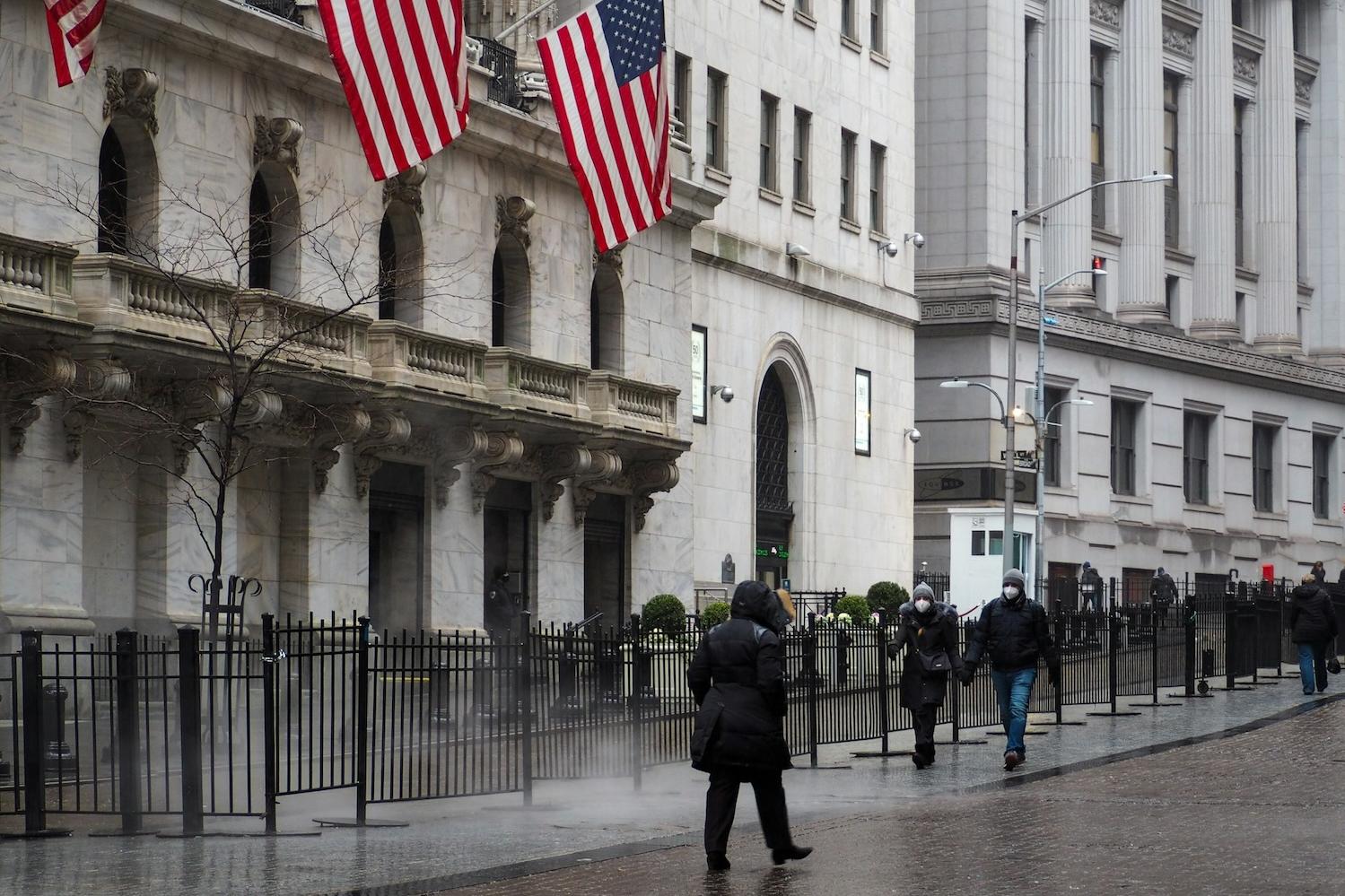

American flags fly over the New York Stock Exchange. (Image: David Jones/Unsplash)
Last summer, the Judiciary Committee in the U.S. House of Representatives started investigating 14 investor organizations with $105 trillion in collective assets, over 80 percent of all managed assets worldwide. The Committee accused the investor groups of antitrust violations and illegal collusion, but it wasn't looking into monopolistic mergers or predatory pricing schemes. It was focused on how the firms measured and managed climate risk.
Letters sent in 2023 warned the organizations they were "potentially violating U.S. antitrust law by entering into agreements to 'decarbonize' [their] assets under management and reduce emissions to net zero."
"The House Judiciary Committee was essentially investigating the entire global economy, saying that shareholders are not allowed to talk about risk," said Andrew Behar, CEO of the shareholder organization As You Sow, which was among those named in the investigation.
In the months since, the committee collected over 2 million pages of documents from asset mangers like BlackRock, State Street and Vanguard, along with the California Public Employees' Retirement System (CalPERS), the proxy advisor Glass Lewis and the investor group GFANZ (the Glasgow Financial Alliance for Net Zero), which includes 675 of the world's largest banks. Executives sat for hours of voluntary testimony, as committee members grilled them on whether companies are "collectively adopting and imposing left-wing environmental, social, and governance (ESG)-related goals" to the detriment of shareholders and the economy.
The committee's report from the investigation was released earlier this summer and barely made the news cycle, likely because it did not include any evidence of illegal activity. "There is no theory of antitrust law that prevents private investors from working together to capture the risks associated with climate change," Rep. Jerrold Nadler (N.Y.) wrote in a report issued by House Democrats in response. No antitrust suits were filed against any of the organizations.
As You Sow and other named organizations repeatedly asked the committee to clarify the congressional purpose of the inquiry but have yet to receive an answer, Behar said. The committee sent out another round of letters to more than 130 organizations including asset managers and universities this week, asking them for information about their involvement with Climate Action 100+, an investor group focused on climate risk.
Why does climate risk matter to investors?
Global climate scientists warn that the frequency and intensity of severe weather events will increase as global temperatures surpass 1.5 degrees Celsius above pre-industrial levels. With temperatures nearing the crucial tipping point, farming communities, shoppers and the global commodities market are already feeling the effects.
The prices of cocoa and coffee surged this year as severe rainfall and heat waves struck key growing regions in West Africa. Olive oil prices are at an all-time high as producers like Spain face their third growing season of devastating droughts. Global prices for other key commodities including soybeans and cotton also spiked over recent years as extreme weather devastated farming communities.
Human and environmental costs aside, all of this means any company that depends on raw materials needs to plan for how it will get them as supply chains are disrupted due to climate change. And asset managers need to asses the level of risk to their portfolios and make decisions accordingly in order to protect their investors' money.
"ESG is just a framework for assessing risk," said Behar of As You Sow. "If you're an investor that doesn't assess risk, you're not going to last very long. If you're a business person that doesn't assess risk, you're not going to be in business. The idea that we shouldn't assess and address risk reflects a lack of understanding of how business works."
Restricting ESG risk assessment comes at a cost to investors and retirees
The House investigation is far from the only legislative attempt to restrict financial companies from assessing how climate change and corporate social policies impact their investments. "At the state level, over 300 bills were put forth across Republican states trying to make sustainable investing illegal — literally it would be illegal to assess or address risk in your portfolio, and they passed in many states," Behar said.
At least 18 states now have so-called "anti-ESG" laws that restrict state agencies and public pension funds from using ESG factors in their investments or ban state and local entities from doing business with specific financial companies.
But limiting investors' ability to assess risk and reducing competition for financial services proved detrimental to investor returns in these states. A recent report from the Texas Association of Business, which includes the oil giants ExxonMobil, Chevron and ConocoPhillips, found the anti-ESG law that bans top financial firms cost the state nearly $669 million and more than 3,000 jobs in two years.
"An analysis of the pension funds in the 18 states that have passed anti-ESG laws shows all of them are underperforming the other 32. Why? Because they can't assess and address risks," Behar said. "The people who are paying the price for this are the constituents: the firefighters, the police officers, the teachers."
Advocates and the public aren't sold on anti-ESG policies: Will it show at the polls?
The U.S. public remains skeptical that anti-ESG laws benefit them, with only 30 percent of likely voters saying they support these policies, according to June polling from the Harvard Law School Forum on Corporate Governance.
Meanwhile a group of self-described “center-right taxpayer advocacy leaders” penned an open letter this spring discouraging state governments from intervening with investment decisions. “These politically motivated actions, driven by extreme positions in both parties, carry outsized ramifications for taxpayers, families, and businesses in a time of intense change and grave economic uncertainty,” the letter reads.
The negative impact these policies could grow more pronounced if commodity prices become more unstable. "The prices of everything are going up because of climate change," Behar said. "The companies who are not assessing and addressing risk, or are based in a state where it's illegal to assess and address risk, are at a massive disadvantage. When someone says ‘don't look at risk,’ you want to look at risk. When they make it illegal, then you really want to make sure you are looking at it strongly."
Voters have a chance to make their stance on the matter known in legislative and presidential elections in November. "The idea that any of these people who pass these laws would get reelected is beyond me," Behar said. "I don't see how anyone would vote for a public servant who just throws away their tax money, doesn't build the infrastructure that the citizens need and would lose money in their pension fund."